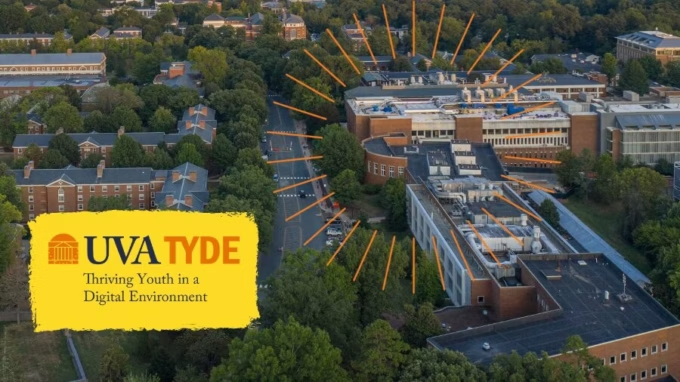By Gil Somers
Introduction
On average, a teenager is exposed to nearly eighty-five drug references a day, either in movies, television, advertisements, and yes, social media. Social media especially plays a significant role in shaping adolescent behavior, including attitudes toward substance use. With millions of teens actively engaging on platforms like Instagram, TikTok, and Snapchat, social media is a major avenue for social interaction and influence. While these platforms can contribute to increased exposure and normalization of substance use, some users and organizations are taking advantage of the platform to spread messages of prevention and education.
The Role of Peer Influence
One of the primary ways social media impacts adolescent substance use is through peer exposure. Social media is a place for teens to share images and videos of themselves engaging in substance use, inadvertently normalizing the behavior. This portrayal can make substance use appear socially acceptable and even desirable, increasing the likelihood of peer-mimicking behavior. Additionally, adolescents who see their peers using substances may feel pressured to engage in similar risk-taking activities to gain social status or acceptance. However, in the same manner, positive peer influence on social media can deter young people from engaging in substance use; when young users see posts from their peers rejecting substance use, they’re less likely to engage in that behavior as well.
One example of this are the challenges and trends that frequently emerge on TikTok that involve drinking alcohol or using nicotine products and are sometimes framed as humorous or rebellious. These trends can spread rapidly, reaching millions of young viewers in a matter of days. A study analyzing TikTok content tagged with #nicotineaddiction found that there is a wide variety in popular posts using this hashtag, with some talking about the social and physiological “benefits,” and others talking about the consequences (withdrawal, cost, punishment). The researchers say that because seeing what their peers are doing can influence a teen’s choices regarding substance abuse, while social media allows for a greater audience of peer behavior, both negative and positive behaviors have great influence on teen choices. The trends within this hashtag demonstrate that peer influence is complicated when it comes to teen substance use.
Marketing and Advertising Exposure
Beyond peer influence, social media exposes teens to targeted marketing and advertising for substances such as alcohol and nicotine. Many companies use social media platforms to promote their products, often in ways that downplay risks and highlight the social appeal of use. Research suggests that frequent exposure to such content can contribute to the destigmatization of substance use, making it appear more mainstream and acceptable. This process creates an environment where teens are more likely to perceive substance use as a normal part of social life.
For instance, e-cigarette brands like JUUL have been criticized for their use of social media influencers to market their products, often targeting younger demographics with sleek, modern advertisements, or on television networks, like “Cartoon Network,” specifically intended for children and teens. An analysis of adolescent responses to advertisements of e-cigarettes on social media found that exposure to visual posts featuring e-cigarette products is associated with increased e-cigarette use among US adolescents. This study found that adolescents are widely exposed to pro-e-cigarette marketing through social media and retailer websites, despite evidence that e-cigarette use poses several health risks, and that this exposure influences their decisions to purchase and use e-cigarettes.
Social Media as a Tool for Prevention
Despite these concerns, social media can also serve as a valuable tool for substance use prevention. Researchers have explored ways to use social media to identify at-risk teens based on their post history and browsing habits. Additionally, institutions such as the National Institutes of Health (NIH) and other health organizations leverage social media to distribute psychoeducational content to dissuade young users from substance use. These efforts aim to counteract harmful messages by highlighting the dangers of substance use and promoting healthy decision-making. Educational campaigns play a crucial role in reshaping adolescent perceptions and reducing the appeal of these risky behaviors.
For example, the Truth Initiative uses social media to raise awareness about the dangers of vaping and tobacco use. Through engaging video content and interactive campaigns, they have reached millions of young viewers, leading to a decline in teen vaping rates in certain demographics. Similarly, some influencers are outspoken about the consequences of substance abuse, and contribute to the positive peer influence mentioned above.
Conclusion
Social media presents a complex landscape regarding adolescent substance use. On one hand, peer influence and targeted advertising can contribute to increased substance use by normalizing risky behaviors. Viral trends, influencer culture, and aggressive marketing strategies all play a role in shaping teen perceptions of substance use. On the other hand, social media also provides a platform for intervention, education, and prevention efforts.
By harnessing the power of social media responsibly, policymakers, educators, and parents can work together to minimize its negative impact while maximizing its potential as a tool for promoting adolescent well-being. Encouraging digital literacy, implementing stricter advertising regulations, and promoting educational content can help shift the narrative away from normalization and toward awareness and prevention.
Wondering how you might talk to your kids about this?



